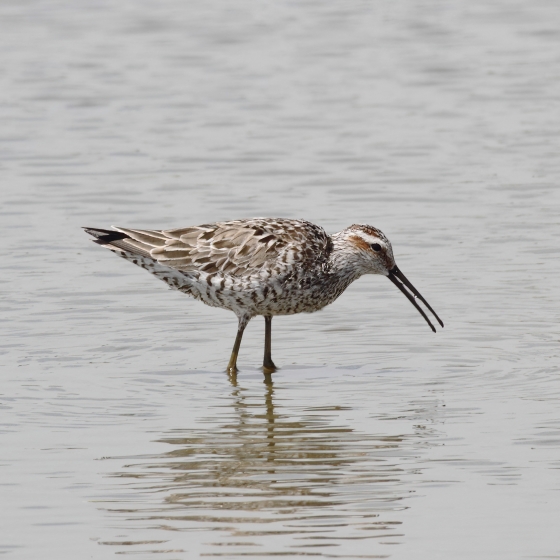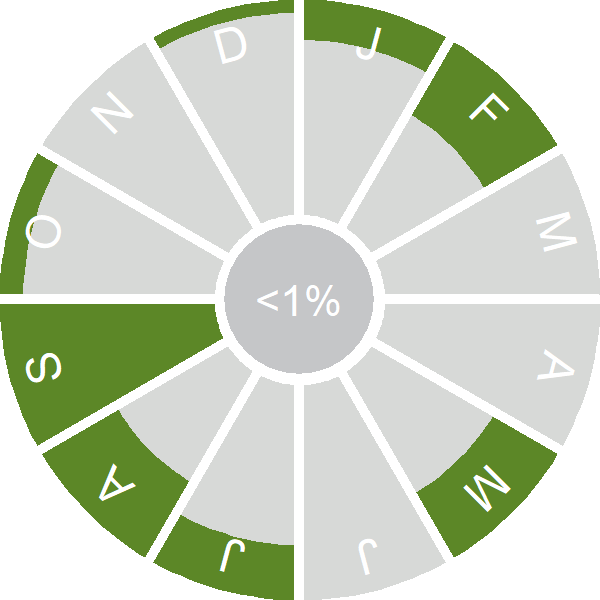Stilt Sandpiper

Introduction
This medium-sized wader breeds in the very north of Canada and Alaska and is a rare visitor to Britain & Ireland. Although there have been records in most months, the species is typically encountered in August or September.

Key Stats
Status and Trends
Conservation Status
Population Size
Population Change
Population trends of this scarce species are not routinely monitored.
Distribution
This species is a rare vagrant and was recorded during Bird Atlas 2007–11 as shown on the map.
or view it on Bird Atlas Mapstore.
Distribution Change
This vagrant is too rarely reported to map distribution change.
Seasonality
Stilt Sandpiper is a very rare vagrant recorded in autumn, winter and spring.
Weekly pattern of occurrence
The graph shows when the species is present in the UK, with taller bars indicating a higher likelihood of encountering the species in appropriate regions and habitats.

Movement
Britain & Ireland movement
Biology
Survival and Longevity
Survival is shown as the proportion of birds surviving from one year to the next and is derived from bird ringing data. It can also be used to estimate how long birds typically live.
Classification, names and codes
Classification and Codes
- Order: Charadriiformes
- Family: Scolopacidae
- Scientific name: Calidris himantopus
- Authority: Bonaparte, 1826
- BTO 2-letter code: MI
- BTO 5-letter code: STISA
- Euring code number: 5150
Alternate species names
- Catalan: territ camallarg
- Czech: jespák dlouhonohý
- Danish: Klireryle
- Dutch: Steltstrandloper
- Estonian: pikkjalg-risla e. pikkjalg-rüdi
- Finnish: pitkäkoipisirri
- French: Bécasseau à échasses
- German: Bindenstrandläufer
- Hungarian: töcspartfutó
- Icelandic: Vaðfæla
- Irish: Gobadán Scodalach
- Italian: Piro piro zampelunghe
- Latvian: garstilbu šnibitis
- Lithuanian: ilgakojis begikas
- Norwegian: Styltesnipe
- Polish: biegus brodzcowaty
- Portuguese: maçarico-pernilongo / pilrito-pernilongo
- Slovak: pobrežník dlhonohý
- Slovenian: dulnik
- Spanish: Correlimos zancolín
- Swedish: styltsnäppa
- Welsh: Pibydd Hirgoes
More Evidence
More evidence from Conservation Evidence.com
Partners
Citing BirdFacts
If you wish to cite particular content in this page (e.g. a specific value) it is best to use the original sources as linked in the page. For a more general citation of the whole page please use: BTO (20XX) BirdFacts Species: profiles of birds occurring in the United Kingdom. BTO, Thetford (www.bto.org/birdfacts, accessed on xx/xx/xxxx).

